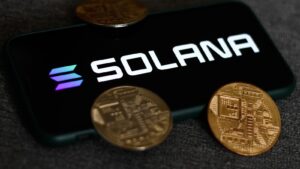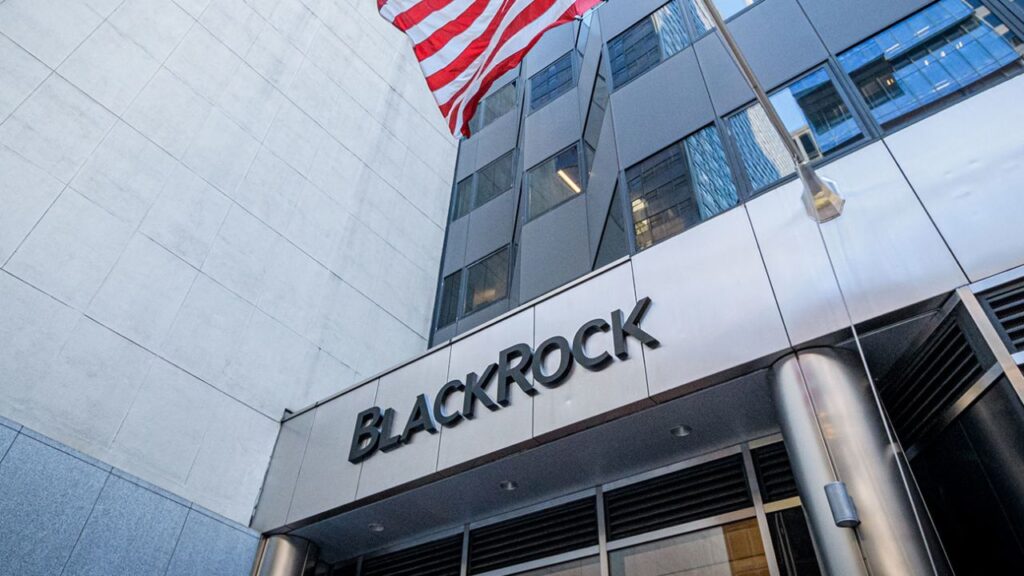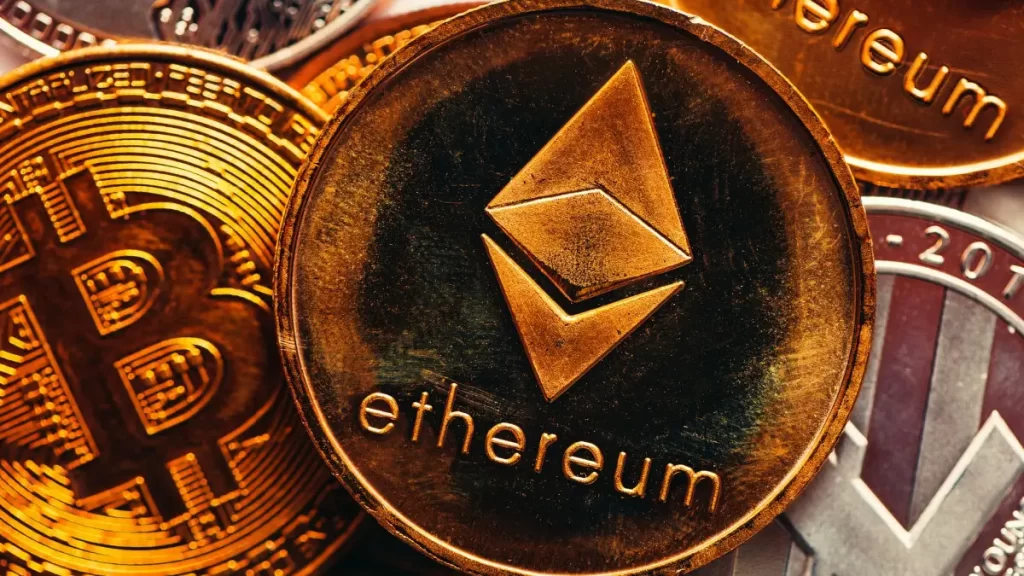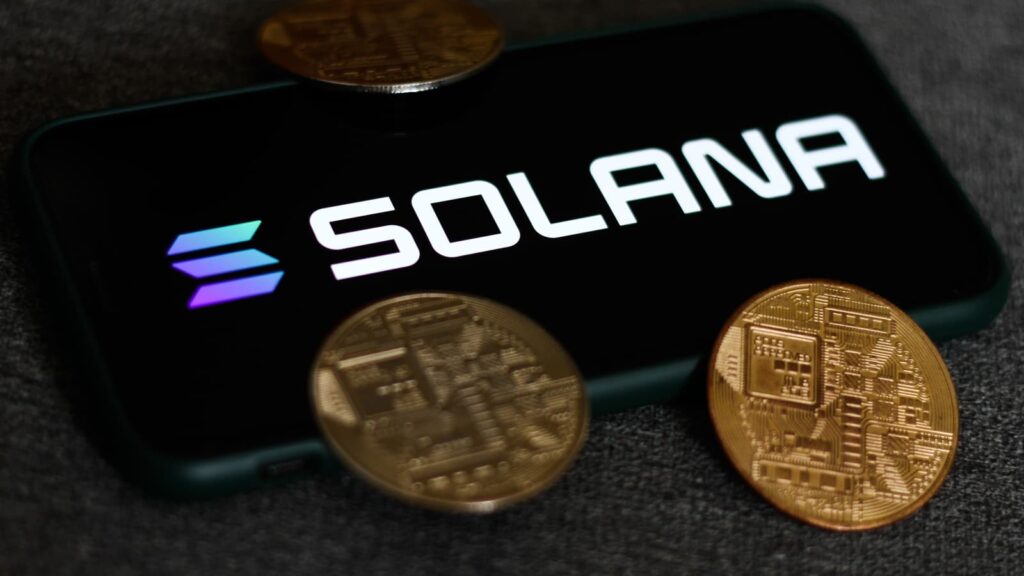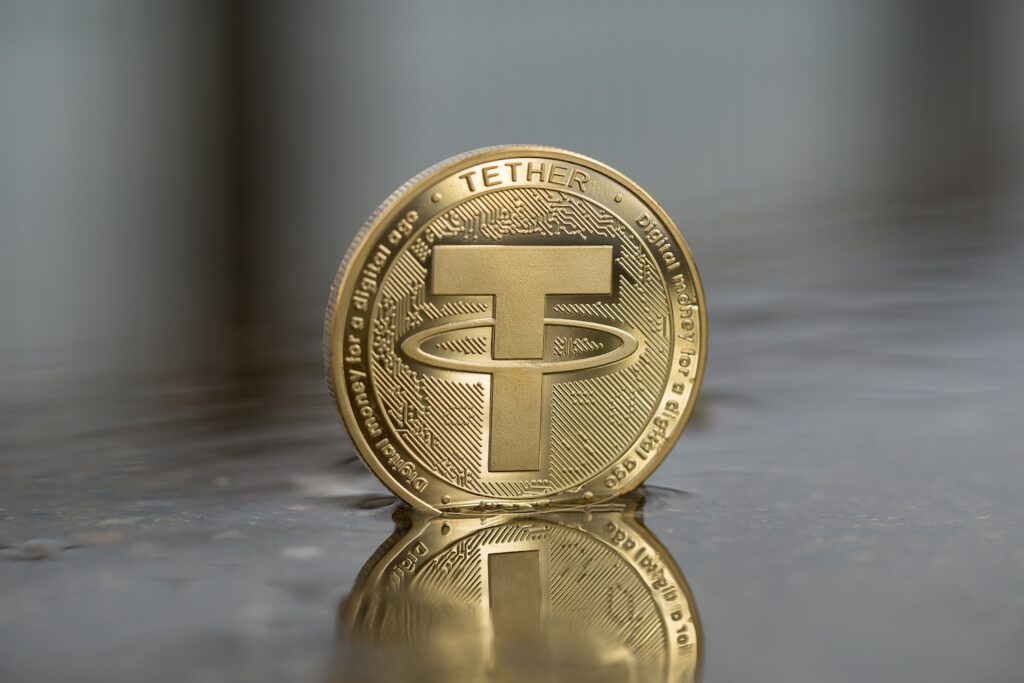Toncoin is a phenomenon that has rocked the industry and received recognition from many crypto enthusiasts. This token has reached the peak of popularity and opened up many new opportunities for earning. According to CoinMarketCap statistics, its price has increased by 100% over the last month. What is the secret of such a meteoric rise? How can you take advantage of Toncoin to make money? This article will reveal the crucial aspects of earning with Toncoin and shed light on the patterns that made the coin the talk of the town.
What’s Toncoin & Its Role in the Crypto Industry?
Toncoin is the native cryptocurrency of The Open Network (TON), an innovative third-generation blockchain platform initially developed by Telegram in 2018. However, in 2020, Pavel Durov, the network’s founder, halted development and released the code publicly following legal proceedings. Despite this setback, the project persisted, buoyed by a dedicated community.
In 2021, the TON blockchain achieved a significant milestone by breaking the world speed record, processing an impressive 55,000 transactions per second. This remarkable feat underscored the project’s emphasis on high scalability and performance, significantly contributing to its widespread adoption. Notably, Toncoin, the native cryptocurrency of Telegram Open Network, experienced a surge in popularity, ranking 11th in the CoinMarketCap ranking by capitalization.
Toncoin serves various functions within the network, including facilitating transactions and enabling participation in protocol management. Toncoin’s success story serves as a beacon of inspiration for modern cryptocurrency projects seeking mass adoption. Despite regulatory challenges, Toncoin has persevered, continuing to evolve and attracting a growing community of crypto enthusiasts.
What is the secret of Toncoin’s popularity?
Toncoin stands on three unbreakable pillars that fuelled its popularity:
Telegram Messaging App
The high value of Toncoin is attributed to its launch within Telegram’s ecosystem. Incorporating the Toncoin wallet into its widely adopted messaging app substantially motivated its expansion.
Advanced Technology
TON, built with a multi-level architecture, processes thousands of transactions per second. This advanced technology also has a vast potential for future improvements. Therefore, the speed and innovation were spread across crypto news as a novel record that caught users’ attention.
Strong Community Support
Toncoin has cultivated a loyal and dedicated community of supporters who are actively engaging with the project. There are over 32,000 token holders and over 700,000 website visits per month of the TON website.
Popularizing cryptocurrency is a complex process that begins with the token’s launch on the market and continues throughout its existence. Crypto projects offer multiple services, making devising a new solution more complicated. However, Toncoin’s team seems to have nailed it.
How to earn with Toncoin while it sets new ATHs?
New Toncoin price records are only a matter of time. While the token increases in value, you can manage its accumulation. There are several ways to earn Toncoin and use this currency to get crypto income.
- Trading Toncoin: TON is listed on various crypto platforms and decentralized exchanges, such as OKX and Bybit. It can also be bought using Telegram bots and crypto wallets. However, there’s also a place to buy Toncoin with extra bonuses as a new user in a profitable iGaming niche with their swap systems. One of these platforms is BetFury, the leading crypto and iGaming ecosystem, which recently listed Toncoin. By purchasing Toncoin on BetFury, you can also experience an upgraded Welcome Pack with generous up to 590% on the deposit and 225 Free Spins. Find the promocode below to get the registration bonus.
- Staking Toncoin: Several platforms offer Toncoin staking, and 21Shares has received the most attention recently. It launched an exchange-traded fund (ETF) pegged to Toncoin that tracks the asset’s price fluctuations and reinvests profits into staking. According to its website, 21Shares had around $7 billion in assets under management as of March 26.
- Gaming with Toncoin: anyone can earn crypto by playing games. Toncoin has become a part of the iGaming industry by partnering with many entertainment projects. For example, the new game Catizen allows you to collect FISH and CATS tokens for upgrading your pets and speeding up the process using TON currency. Another example is BetFury, which has over 8,000 Slots and 20 Original games with up to 99.28% RTP for users to place bets in Toncoin. So, you can choose any exciting entertainment to earn more crypto with Toncoin.
- Investing in Promising Projects: there is another way to earn crypto – searching for promising projects with drops and investments in technologies related to TON. One of the most popular is the Free TON blockchain from TON Labs. It’s another TON prototype with the native TON Crystal token, created based on Durov’s open-source code. Free TON developers have made useful applications and tools, such as the TON-Ethereum Bridge or the TON Surf wallet. Thus, investing in such projects can help you to reach your earning goals.
As you can see, TON is now at the peak of popularity. Toncoin is available for trading and is open to any investment opportunities. If you want to get Toncoin now, go to BetFury and buy it in a matter of seconds, along with crypto bonuses. The first 70 users to register on BetFury and enter the promo code TONCOIN by April 30th will receive 400 BFG on their bonus balance. Make an x40 wager playing on BetFury to claim your registration bonus and get a chance to win crypto while reaching the wager.
Which Factors to Consider Investing in Cryptocurrency?
Investing, staking, or trading cryptocurrency requires users to be cautious and attentive. Keep in mind these aspects to avoid dangers.
- DYOR: do research to find more suitable tools for earning crypto and study this area more deeply.
- Stop-loss: pay attention to stop-loss orders to use them as a limit to potential losses.
- News Tracking: stay updated on Toncoin news from official resources to always be within the information field.
- Ensure Security: check for audits and install the necessary security measures for funds on the platform where you earn money.
Will Toncoin’s Price Go Up or Down in the Nearest Future?
Toncoin has potential solid and bright long-term prospects. Its price has almost doubled over the past month, which confirms this fact. The Open Network is already on track to compete with Bitcoin and Ethereum, offering lightning-fast transaction speeds and low fees. According to CoinCodex statistics, the price of Toncoin will range from $5.07 to $24.16 by 2025. These analysts rely on the historical price movement of the token, as well as the influence of the BTC Halving and other crucial events. The currency is unique and can become even more valuable soon. However, market volatility makes setting the exact Toncoin price prediction impossible.
Conclusion
The Open Network is a technological breakthrough that has boosted the cohesion of the crypto community. Toncoin’s fire has not gone out and will warm the wallets of all its owners for many years. Therefore, strive for maximum benefits with Toncoin on trusted crypto platforms.
As the first quarter of 2024 draws to a close, Bitcoin is on the brink of reaching the end of Q1 with a 65% increase in BTC price, but faces the risk of “exhaustion.”
QCP Capital, a trading firm, alerted its Telegram channel subscribers on March 29, suggesting that the “exponential” rise in price could present challenges in the upcoming quarter.
The Bitcoin market is especially attentive this weekend as critical candlestick patterns—the weekly, monthly, and quarterly—are set to close simultaneously.
Despite Bitcoin’s strong performance at the start of the year, maintaining momentum around its all-time highs and establishing them as new support levels remains challenging.
QCP Capital, however, maintains a “very bullish” outlook for Q2, citing several factors that could fuel further growth.
These include ongoing demand for BTC spot ETFs, the upcoming BTC halving event, the introduction of London Stock Exchange ETNs, and the potential approval of an ETH spot ETF.
The launch of spot Bitcoin ETFs in the United States in January marked a significant milestone, yet the firm cautions that the rapid pace of the Q1 rally may be hard to sustain due to signs of market fatigue.
QCP Capital expressed concerns over declining interest in Ether, the largest altcoin, and the high funding rates persisting across trading platforms.
Despite a generally optimistic stance, the firm advises caution with leverage and readiness to capitalize on significant price dips.
Recent data from Cointelegraph Markets Pro, TradingView, and CoinGlass confirms that the BTC/USD pair has seen a 65.4% increase since the beginning of the year, closely competing with the performance in the first quarter of 2023.
A close significantly above $61,000 would mark the seventh consecutive month of gains for BTC/USD, a feat only previously achieved in 2012.
This delicate balance of potential and caution defines the current state of Bitcoin as it navigates the complex dynamics of the cryptocurrency market entering Q2 2024.
To submit a crypto press release (PR), send an email to sales@cryptointelligence.co.uk.
In a recent security breach on the Binance launch pool, an imposter token masquerading under the same name as Ethena Labs’s ENA token was exploited, leading to a significant loss.
The fake token was used to unlawfully extract 480 BNB tokens, valued at approximately $290,000. The exact vulnerability that allowed this exploit remains unknown.
The incident was first reported by PeckShield, an on-chain security firm, at 8:31 am UTC on March 29. The firm initially misidentified the counterfeit token as Ethena Labs’s genuine ENA token in a post on X.
This deceptive operation occurred just hours after Ethena Labs‘s ENA token was officially announced on the Binance Launchpool on the same day, causing confusion among investors and stakeholders.
This incident follows the successful launch of Ethena Labs’s USDe synthetic dollar on the public mainnet on February 19.
By March 8, Ethena had distinguished itself as the top-earning decentralized application (DApp) in the cryptocurrency sector, promising investors an annual percentage yield (APY) of 67%.
Although the exploit involving the counterfeit ENA token is relatively minor in comparison to other cryptocurrency thefts, it occurred closely following the Prisma Finance hack on March 28, which resulted in losses exceeding $11 million.
READ MORE: Grayscale Maintains Optimism for May Approval of Spot Ether ETFs Despite SEC Engagement Concerns
These events underscore the ongoing challenges and security vulnerabilities within the crypto industry, which have historically undermined investor confidence.
Throughout 2024, over $200 million in cryptocurrency assets have been compromised across 32 separate incidents up to February 29, as reported by blockchain security firm Immunefi.
This figure represents a 15.4% increase from the losses recorded in January and February 2023, which totaled $173 million.
The cryptocurrency sector experienced significant losses due to hacking activities in 2023, with a total of $1.8 billion stolen.
The North Korean Lazarus Group was responsible for approximately 17% of these losses.
The “2024 Crypto Crime Report” by Chainalysis highlighted that 2022 was a peak year for crypto theft, with over $3.7 billion in funds stolen, demonstrating a substantial decrease to $1.7 billion in 2023.
The report attributed the decline primarily to a reduction in decentralized finance (DeFi) hacking incidents, with the total value stolen from DeFi platforms dropping by 63.7% year-over-year.
To submit a crypto press release (PR), send an email to sales@cryptointelligence.co.uk.
Google has taken a significant leap in enhancing user experience by integrating the ability to search for wallet balances across various blockchains, including Bitcoin, Arbitrum, Avalanche, Optimism, Polygon, and Fantom.
Users can now effortlessly input a wallet address and receive detailed information on token balances by network and the latest update time.
This feature supports three Bitcoin address formats — P2PKH, P2SH, and Bech32 — enabling users to check current balances and recent transactions seamlessly.
This integration of Bitcoin data into Google’s search results marks a significant advancement in making on-chain activity more accessible, leveraging Google’s massive daily search traffic.
Although this development has been met with applause for promoting mainstream adoption, it has also sparked privacy concerns among Bitcoin enthusiasts who prioritize privacy, due to fears over centralized data aggregation.
Following its introduction of Ethereum Name Service (ENS) domain search capabilities, Google’s new feature represents a continued expansion of its blockchain-related services.
Users can now search for wallet balances using easily recognizable domain names, such as “vitalik.eth” for Ethereum wallet addresses.
This update builds on Google’s initial steps toward embracing the crypto world, starting with Ethereum wallet balance searches in May 2023 and the integration of a feature in 2022 that tracked some Ethereum wallet balances directly through Google, bypassing the need to visit Etherscan.
READ MORE: Driving Cats NFT Club Drop Begins in Challenge to SHIB, BONK, PEPE and DOGE
The progression in Google’s approach is notable, from banning Bitcoin-related advertisements in 2018 to its recent reversal, which now welcomes advertisements for spot Bitcoin exchange-traded funds (ETFs) following their U.S. approval in January.
This change has allowed ETF offerings from prominent asset managers like BlackRock to feature in Google’s search results.
Moreover, in October 2022, Google’s partnership with Coinbase enabled customers to pay for cloud services with cryptocurrencies, demonstrating Google’s growing embrace of digital currencies.
Furthermore, Google has shown its support for significant events in the crypto world, such as the Ethereum Merge, by featuring themed animations, and has partnered with Web3 startup Orderly Network in 2023.
This collaboration aims to develop user-friendly developer tools for decentralized finance (DeFi), addressing some of the main challenges within the DeFi ecosystem, including entry barriers and security concerns.
This series of initiatives highlights Google’s evolving relationship with the cryptocurrency and blockchain technology, positioning it as a key player in the bridge between mainstream users and the decentralized digital world.
To submit a crypto press release (PR), send an email to sales@cryptointelligence.co.uk.
The recent surge in the tokenization of U.S. Treasurys, exceeding $1 billion across various blockchains like Ethereum, Polygon, and Solana, has been significantly influenced by the introduction of BlackRock‘s USD Institutional Digital Liquidity Fund.
Launched on March 20 on Ethereum, the fund, known by its ticker “BUIDL,” has quickly reached a market cap of $244.8 million.
This growth was propelled by four substantial transactions totaling $95 million within a week, placing BUIDL as the second-largest fund of its kind, just behind Franklin Templeton’s Franklin OnChain U.S. Government Money Fund (FOBXX) which leads with $360.2 million in assets.
This milestone of over $1 billion in tokenized U.S. Treasurys is spread across 17 distinct products, demonstrating the expanding reach of this financial innovation.
The largest recent contribution to BlackRock’s fund came from Ondo Finance, which added $79.3 million. This deposit is part of Ondo’s strategy to facilitate instant settlements for its U.S.
Treasury-backed token, OUSG, making it a substantial player with a 38% stake in BUIDL. This move was highlighted by Tom Wan of 21.co, marking a significant step in the fund’s growth.
BlackRock’s BUIDL operates with a 1:1 peg to the U.S. dollar, offering investors daily accrued dividends paid monthly. Its launch utilized the Securitize protocol on Ethereum, reflecting the broader industry trend towards blockchain-based efficiencies.
BlackRock CEO Larry Fink and others in the sector see tokenization as a pathway to more streamlined capital markets, with predictions suggesting a potential market size of $16 trillion by 2030.
This innovation is not limited to government securities; a wide array of assets including stocks and real estate are also being tokenized, with Ethereum hosting $700 million of the total real-world assets (RWA) on-chain.
Tokenization efforts extend beyond traditional asset management firms, with Franklin Templeton utilizing Stellar and Polygon for FOBXX, reflecting a diverse ecosystem of platforms supporting tokenized products.
This growing sector includes both established financial institutions like WisdomTree and blockchain-native companies such as Ondo Finance, Backed Finance, and others, illustrating a broad and multi-faceted approach to incorporating real-world assets into the digital blockchain space.
To submit a crypto press release (PR), send an email to sales@cryptointelligence.co.uk.
The global network of Bitcoin ATMs is poised for rapid expansion, spurred by the anticipation of the Bitcoin halving event, as stated by the chief of a leading ATM provider.
This prediction comes after a significant drop in crypto ATM installations in 2023, marking the first decline in a decade, attributed to a bear market intensified by the failure of several cryptocurrency firms.
Brandon Mintz, CEO of Bitcoin Depot, highlighted an encouraging start to 2024, with 1,469 new crypto ATM installations in the first quarter alone.
This is a stark contrast to the previous year when over 3,000 units were removed. Mintz expressed optimism for continuous growth in the industry, especially with Bitcoin experiencing remarkable performance, having surpassed its all-time high twice in March.
According to Mintz, the latter stages of bull markets often witness a surge in cryptocurrency adoption, which in turn boosts customer traffic to Bitcoin ATMs.
He anticipates this trend to escalate post-halving, an event set for late April that reduces Bitcoin mining rewards by half.
Historical patterns suggest that the halving leads to a substantial price increase and heightened investor interest.
Despite the recent increase in ATM installations, the industry has seen a reduction in operators over the last 18 months, with notable bankruptcies such as Coin Cloud’s.
Mintz attributed this downturn to the broader crypto market’s challenges, especially following the collapse of the FTX exchange.
Bitcoin Depot reported a 7% increase in annual revenues to $689 million, although net income saw a significant decline.
The company is expanding its ATM network in the U.S., planning hundreds of new installations across convenience stores in 24 states.
The U.S. dominates the global distribution of crypto ATMs, hosting over 83% of the world’s total.
Recent regulatory approvals, like spot Bitcoin ETFs, have been seen as potential growth drivers for the sector, although Mintz views Bitcoin ATM users and ETF investors as distinct customer groups.
He underlined the importance of Bitcoin ATMs for people who are underbanked or prefer cash transactions, contrasting them with the typically wealthier ETF buyers.
Mintz believes that any positive impact of ETFs on Bitcoin’s price and adoption will likely increase the usage of Bitcoin ATMs, benefiting the industry overall.
To submit a crypto press release (PR), send an email to sales@cryptointelligence.co.uk.
For the first time, THORChain, a decentralized liquidity protocol, has surpassed a significant milestone, recording over $10 billion in total monthly trading volume.
This achievement was highlighted in a post on X, formerly known as Twitter, by THORChain’s official account, with Runscan data confirming a trading volume of $10.26 billion for the month.
Despite this success, Bitcoin maximalists are split on the platform’s security and the attractiveness of its offerings, particularly concerning interest-free loans against Bitcoin (BTC).
The discussion among Bitcoin enthusiasts unfolded on social media, following the announcement.
Fred Krueger, a mathematician and Bitcoin investor, expressed his support for THORChain on March 27, emphasizing his trust in the protocol’s BTC-backed loans as a secure option for Bitcoiners seeking liquidity.
Contrarily, Bitcoin analyst Dylan Le Clair criticized Krueger’s viewpoint, highlighting the inherent risks in taking out a loan that relies on the exchange rate of an altcoin, pointing out the unquantifiable risks involved in such transactions.
THORChain stands out for allowing seamless asset swaps across different blockchains and offering loans without interest or compulsory liquidations.
A notable update on January 30 reduced the collateral necessary for borrowing against Bitcoin and Ether, effectively allowing users to borrow up to half the value of their assets.
Chris Blec, an analyst, acknowledged THORChain’s unique no-liquidation lending model as “interesting” on March 10 but raised concerns about potential pitfalls.
The first risk involves lending Bitcoin to a protocol susceptible to failure or security breaches, an issue THORChain faced in 2021, albeit with a resolution that saw funds returned.
The second risk pertains to the dependency on a centralized provider, which could alter terms, thus endangering loans.
In addition to the platform’s innovative approach to loans, THORChain experienced interruptions to its mainnet service twice in 2023 due to potential security flaws, underscoring the ongoing debates over its safety and reliability for Bitcoiners.
To submit a crypto press release (PR), send an email to sales@cryptointelligence.co.uk.
Ethereum’s Ether (ETH) has witnessed a notable increase, climbing 3.5% to surpass $3,630 on March 31.
This rise marks an 18.75% improvement from its recent low near $3,050, observed just over a week ago.
The momentum behind Ether’s recent price uptick is multifaceted.
A significant aspect is its performance against both the U.S. dollar and Bitcoin (BTC).
The ETH/BTC pair, for instance, saw a 2.5% increase on the same day, reaching 0.051 BTC.
This suggests a potential short-term capital shift towards Ether.
Ether’s market dominance has also seen a boost, evidenced by a 2.16% rise in the Ethereum Dominance Index (ETH.D) in the last 48 hours from its March 29 low.
This trend indicates an inflow of investment from other altcoins into Ether, strengthening its dollar valuation.
A key factor in this surge is the behavior of Ether’s largest holders, or “whales,” who have been accumulating more ETH.
Glassnode data shows that entities with 1,000 to 10,000 ETH have increased their holdings by 1.15% in March. Such accumulation patterns have historically preceded significant price rallies.
Furthermore, Ether’s funding rates in the perpetual contracts market have escalated, with the funding rate for Dogecoin perpetual futures reaching 0.0591% per eight hours as of March 31.
READ MORE: Bitcoin Withdrawals Soar as US Spot ETFs Spark Historic Supply Squeeze
This indicates a higher cost for maintaining long positions and suggests an anticipation of further price increases.
Ether’s open interest in derivative contracts has leveled at around $14 billion, following a recent peak.
This stabilization, coupled with rising funding rates, suggests an eagerness among traders to leverage their positions, anticipating further price growth.
Ether’s current trajectory also reflects technical analysis patterns.
After testing its lower trendline in what seems to be a rising wedge pattern, Ether found support at the $3,485 level, corresponding to its 0.236 Fibonacci retracement.
Rising wedges typically indicate a potential price drop; however, if Ether breaks above the pattern’s upper trendline, it could ascend towards $4,000 by the end of April, challenging the 0.0 Fibonacci level.
Conversely, adherence to the rising wedge pattern could see ETH’s price target adjusting to around $3,280.
To submit a crypto press release (PR), send an email to sales@cryptointelligence.co.uk.
In a significant mishap on the Lido liquid-staking platform, approximately $24 million in tokenized staked Solana (stSOL) has been inadvertently trapped due to a glitch in the smart contract.
This incident affects the Lido on Solana service, which had previously offered users a 5% yield on staked Solana before being phased out in October 2023 amidst financial viability concerns and minimal fees.
Following the discontinuation of a user-friendly unstaking option in February, customers were left to navigate the complexities of the Solana command line interface (CLI) for unstaking their tokens.
This technical hurdle proved daunting for many, as reflected in the concerns voiced on Lido’s Discord channel in March.
Solscan data indicates that there remains a substantial $24 million in stSOL spread across 31,588 holders.
Discord users expressed frustration over the unwieldy process, highlighting errors encountered despite adhering to Lido-provided guidelines.
For instance, ericxtang lamented on March 15 that neither of the two solutions on the Lido site facilitated stSOL unstaking.
Similarly, “Number9guy” recounted an unsuccessful attempt to convert stSOL back to SOL, with the tokens remaining immobilized with a validator.
READ MORE: Bitcoin Surges Past $71,000 Amid Legal Turmoil, Whales Shift as Bullish Sentiment Prevails
Clarification came from Pavel Pavlov, a product manager at P2P Validator, formerly associated with Lido on Solana, revealing on March 30 that the withdrawal issue stemmed from a smart contract malfunction, specifically tied to the Rent-Exempt Split logic’s modification.
Despite recognizing the problem, Pavlov disclosed P2P’s inability to directly rectify the situation, prompting outreach to the Lido DAO for potential smart contract adjustments.
Subsequent updates from Pavlov indicated progress, with the deployment of an updated maintainer bot facilitating CLI withdrawals, accompanied by a guide for users.
Despite the challenges in altering the smart contract, efforts to identify alternative solutions continue, without a definitive timeline for resolution.
Pavlov empathized with affected users, assuring them of the team’s dedication to finding a resolution.
Some community members have proposed utilizing the on-chain stability protocol Sanctum or Jupiter, which integrates Sanctum, for converting stSOL into SOL or alternative liquid staking tokens. As of now, Lido Finance has not commented on the situation.
To submit a crypto press release (PR), send an email to sales@cryptointelligence.co.uk.
Tether, the company behind the world’s largest stablecoin, has recently achieved a significant milestone by completing a System and Organization Controls 2 (SOC) audit, marking a pinnacle of security compliance as outlined by the American Institute of Certified Accountants (AICPA).
This accomplishment reflects Tether’s dedication to maintaining a secure and reliable platform for its users.
Paolo Ardoino, Tether’s CEO, emphasized the importance of this achievement in a statement released on April 1, saying, “This compliance measure assures our customers that their assets and data are managed in an environment meeting the highest standards for data protection and information security.
“This independent validation of security controls is vital for Tether, demonstrating our commitment to being the world’s most trusted and compliant stablecoin.”
In addition to this achievement, Tether has committed to annual SOC 2 audits to continuously verify that its security practices meet rigorous standards.
The company also plans to secure the SOC 2 Type II certification by the end of 2025, a testament to its long-term dedication to internal control efficacy over a 12-month evaluation period.
Tether’s stablecoin, USDT, has witnessed remarkable growth, achieving a $100 billion market cap on March 4 and ranking as the third-largest cryptocurrency, trailing only behind Ether and Bitcoin.
This growth underscores Tether’s significant impact on the crypto market, further highlighted by its plans to expand beyond stablecoins into Bitcoin mining.
READ MORE: Bitcoin Surges to $70,000, Eyes Record Highs Amid Positive Economic Remarks from Fed Chair Powell
The firm has outlined an ambitious $500 million investment strategy to establish Bitcoin mining operations in Uruguay, Paraguay, and El Salvador.
In a Bloomberg interview on Nov. 16, 2023, Ardoino shared Tether’s goal to command 1% of the Bitcoin mining network, alongside detailing plans for expanding its mining capacity to 450 megawatts (MW) by 2025.
This expansion includes considerations for a 300 MW facility and innovative strategies for operational flexibility, such as relocatable containerized facilities to adapt to fluctuating electricity prices.
Ardoino’s cautious yet optimistic approach to mining expansion reflects Tether’s broader strategy of careful growth, stating, “Mining for us is something that we have to learn and grow over time.
“We are not in a rush to become the biggest miner in the world.”
To submit a crypto press release (PR), send an email to sales@cryptointelligence.co.uk.


